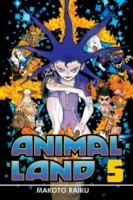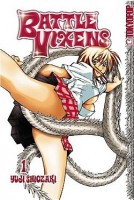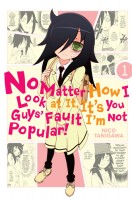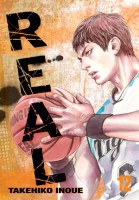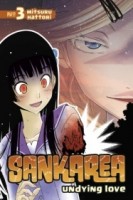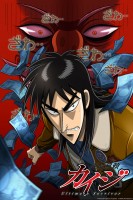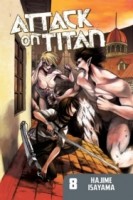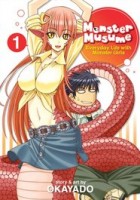My News and Reviews
Last week was apparently “Blade of the Immortal Week” here at Experiments in Manga. I finally got around to reading and reviewing Blade of the Immortal: Legend of the Sword Demon, a novel written by Junichi Ohsako with illustrations by Hiroaki Samura, which is a re-imagining of the early part of the manga series. Honestly, I was disappointed with it and would only recommend the novel to fellow Blade of the Immortal completists. I also reviewed Blade of the Immortal, Volume 27: Mist on the Spider’s Web. With that review, I have now caught up with the English released of the Blade of the Immortal manga series. And so, I wrote some random musings on Wrapping Up the Blade of the Immortal Monthly Review Project.
And now for a few interesting things found online last week. SciFi Japan has a great interview with Zack Davisson, the translator for the recently released Showa: A History of Japan by Shigeru Mizuki. The School Library Journal’s Good Comics for Kids has an interesting roundtable on Gene Luen Yang’s Boxers & Saints. Takako Shimura’s Wandering Son, Volume 4 is one of the nominees for the 2014 Rainbow Book List. (As is Julie Maroh’s Blue Is the Warmest Color, for that matter.) And finally, Kodansha Comicss participated in Reddit’s Ask Me Anything. I haven’t had the chance to read through all of the comments yet, but what I’ve read so far has been interesting.
Quick Takes
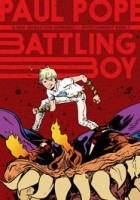 Battling Boy by Paul Pope. I have enjoyed Paul Pope’s work in the past and so I was very excited for the release of Battling Boy, his most recent graphic novel. What I didn’t realize was that it was the first volume in what will be at least a two-volume series, not including the recently announced prequel The Rise of Aurora West. It was a little frustrating to reach the end of Battling Boy just when things were really starting to pull together only to discover that it stops without any sort of conclusion and not even much of a cliffhanger. Still, Battling Boy is a tremendous amount of fun and I did enjoy it. I appreciate Pope’s offbeat humor and slightly surreal and absurd storytelling. The artwork’s pretty great, too. Following the eponymous demigod Battling Boy as he struggles to complete his coming-of-age ceremony and become a hero, the graphic novel is Pope’s original take on the superhero origin story. While he brings his own touch to the genre, there are plenty of influences from other comics (such as Batman and Thor to name two) that can be seen in the work.
Battling Boy by Paul Pope. I have enjoyed Paul Pope’s work in the past and so I was very excited for the release of Battling Boy, his most recent graphic novel. What I didn’t realize was that it was the first volume in what will be at least a two-volume series, not including the recently announced prequel The Rise of Aurora West. It was a little frustrating to reach the end of Battling Boy just when things were really starting to pull together only to discover that it stops without any sort of conclusion and not even much of a cliffhanger. Still, Battling Boy is a tremendous amount of fun and I did enjoy it. I appreciate Pope’s offbeat humor and slightly surreal and absurd storytelling. The artwork’s pretty great, too. Following the eponymous demigod Battling Boy as he struggles to complete his coming-of-age ceremony and become a hero, the graphic novel is Pope’s original take on the superhero origin story. While he brings his own touch to the genre, there are plenty of influences from other comics (such as Batman and Thor to name two) that can be seen in the work.
 Endless Rain by Yuuya. I’ve not had particularly good luck with the boys’ love that I’ve been reading recently and Endless Rain hasn’t changed that. I can’t say that I enjoyed this one-shot much at all. Despite having a happy ending (which I am not at all convinced would happen) the manga isn’t particularly pleasant and includes what basically amounts to forced prostitution. The plotting is sloppy, the narrative is difficult to follow and at times doesn’t make any sense, and the characterization is inconsistent. With Hyougami’s vendetta against the Kasuga family and the bad blood between Akira Kasuga and his father Endless Rain had some potential, but Yuuya doesn’t quite pull it off. Maybe if the manga was a little longer it wouldn’t have been such a mess. As it is, Yuuya tries to cram in too much and it ends up rushed. The only part of Endless Rain that I really liked was Iwao—a scarred and severe-looking yakuza who dotes on Akira’s younger brother. Contrary to his appearance, he’s actually a very sweet guy. Unfortunately, he only briefly shows up as a side character.
Endless Rain by Yuuya. I’ve not had particularly good luck with the boys’ love that I’ve been reading recently and Endless Rain hasn’t changed that. I can’t say that I enjoyed this one-shot much at all. Despite having a happy ending (which I am not at all convinced would happen) the manga isn’t particularly pleasant and includes what basically amounts to forced prostitution. The plotting is sloppy, the narrative is difficult to follow and at times doesn’t make any sense, and the characterization is inconsistent. With Hyougami’s vendetta against the Kasuga family and the bad blood between Akira Kasuga and his father Endless Rain had some potential, but Yuuya doesn’t quite pull it off. Maybe if the manga was a little longer it wouldn’t have been such a mess. As it is, Yuuya tries to cram in too much and it ends up rushed. The only part of Endless Rain that I really liked was Iwao—a scarred and severe-looking yakuza who dotes on Akira’s younger brother. Contrary to his appearance, he’s actually a very sweet guy. Unfortunately, he only briefly shows up as a side character.
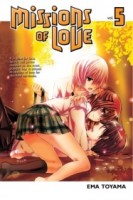 Missions of Love, Volume 5 by Ema Toyama. Although I am familiar with the basic premise of Missions of Love, I haven’t actually read any of the series until this volume. When I heard the manga described it seemed so trope-filled that I just couldn’t muster up any interest in it despite the rather provocative covers. But now I’m kind of sorry that I missed out on the earlier volumes. Yes, there are quite a few tropes being used, but the twisted romantic relationships are mesmerizing even if they aren’t particularly healthy. None of the characters are really very nice people and their interactions are a mess of lies and manipulation. Missions of Love is very suggestive and scandalous even though all that really happens in this volume (well, except for the emotional exploitation) is a bit of ear nibbling. I can see why others call Missions of Love addicting; I know that I want to read more. The only thing that really annoyed me about Missions of Love is how Yukina’s glasses are drawn (or rather how the aren’t drawn)—the lines used are so minimal that they barely seem to exist at all.
Missions of Love, Volume 5 by Ema Toyama. Although I am familiar with the basic premise of Missions of Love, I haven’t actually read any of the series until this volume. When I heard the manga described it seemed so trope-filled that I just couldn’t muster up any interest in it despite the rather provocative covers. But now I’m kind of sorry that I missed out on the earlier volumes. Yes, there are quite a few tropes being used, but the twisted romantic relationships are mesmerizing even if they aren’t particularly healthy. None of the characters are really very nice people and their interactions are a mess of lies and manipulation. Missions of Love is very suggestive and scandalous even though all that really happens in this volume (well, except for the emotional exploitation) is a bit of ear nibbling. I can see why others call Missions of Love addicting; I know that I want to read more. The only thing that really annoyed me about Missions of Love is how Yukina’s glasses are drawn (or rather how the aren’t drawn)—the lines used are so minimal that they barely seem to exist at all.
 Silver Spoon directed by Tomohiko Ito. Based on the award-winning manga series Silver Spoon by Hiromu Arakawa (which was in part inspired by her experiences growing up on dairy farm), the Silver Spoon anime adaptation is quite well done. The series is very forthright and honest about where food comes from, including the raising and slaughtering of animals for meat. I know that particular subject will distrub some viewers, but I think it is something that is important for people to understand and the anime does handle it very well. Many of its characters are also conflicted over it. One of the major story lines of Silver Spoon has to do with Hachiken, the protagonist, trying to come to terms with what it is he eats. However, life and the taking of it is treated with immense respect in the series. I myself grew up in a farming community among the cows, corn, and soybeans (my neighbors actually happened to be dairy farmers), and so I could appreciate Silver Spoon‘s realistic portrayal of the challenges faced by those who make their living caring for animals and crops.
Silver Spoon directed by Tomohiko Ito. Based on the award-winning manga series Silver Spoon by Hiromu Arakawa (which was in part inspired by her experiences growing up on dairy farm), the Silver Spoon anime adaptation is quite well done. The series is very forthright and honest about where food comes from, including the raising and slaughtering of animals for meat. I know that particular subject will distrub some viewers, but I think it is something that is important for people to understand and the anime does handle it very well. Many of its characters are also conflicted over it. One of the major story lines of Silver Spoon has to do with Hachiken, the protagonist, trying to come to terms with what it is he eats. However, life and the taking of it is treated with immense respect in the series. I myself grew up in a farming community among the cows, corn, and soybeans (my neighbors actually happened to be dairy farmers), and so I could appreciate Silver Spoon‘s realistic portrayal of the challenges faced by those who make their living caring for animals and crops.

